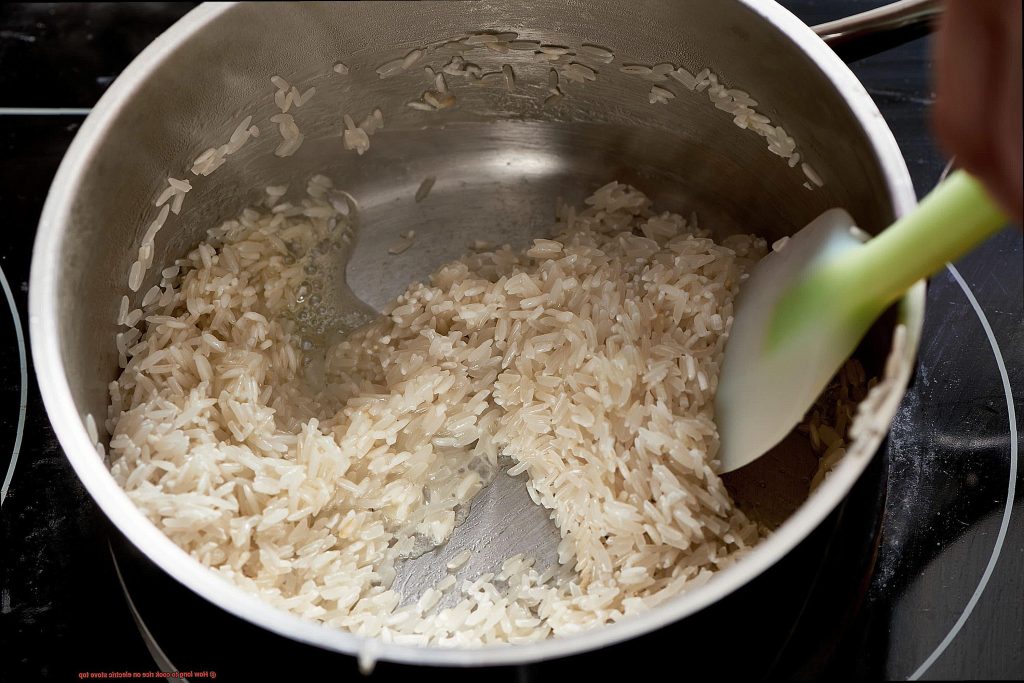Do you love the mouth-watering taste of smoky BBQ? The kind that leaves your taste buds tingling with the perfect blend of flavors and aromas? If so, then you know that selecting the right wood is essential to achieve that perfect smoky flavor. However, did you know that drying wood is equally crucial in elevating your BBQ game?
Drying wood before smoking is a process that can significantly impact the quality of your meat. Wet wood can cause uneven burning, less smoke, and even leave creosote on your meat. So, learning how to dry wood properly can take your BBQ journey from good to great.
But how long should you dry wood before smoking? Well, it depends on several factors like the type of wood you’re using, the climate in your area, and the size of the wood. Different woods dry at different rates and may require varying conditions to achieve optimal moisture content.
In this article, we’ll explore why drying wood before smoking is so important, how to determine when it’s dry enough, and some tips for speeding up the drying process. So grab a cold beverage, sit back and let’s dive into the world of drying wood for an unforgettable BBQ experience.
Contents
What is the General Rule of Thumb for Drying Wood?
When it comes to smoking meat, achieving the perfect flavor is all about drying your wood. But how do you know when it’s ready for use? The general rule of thumb is to let it dry for at least six months, but there are some key factors that can impact this timeline.
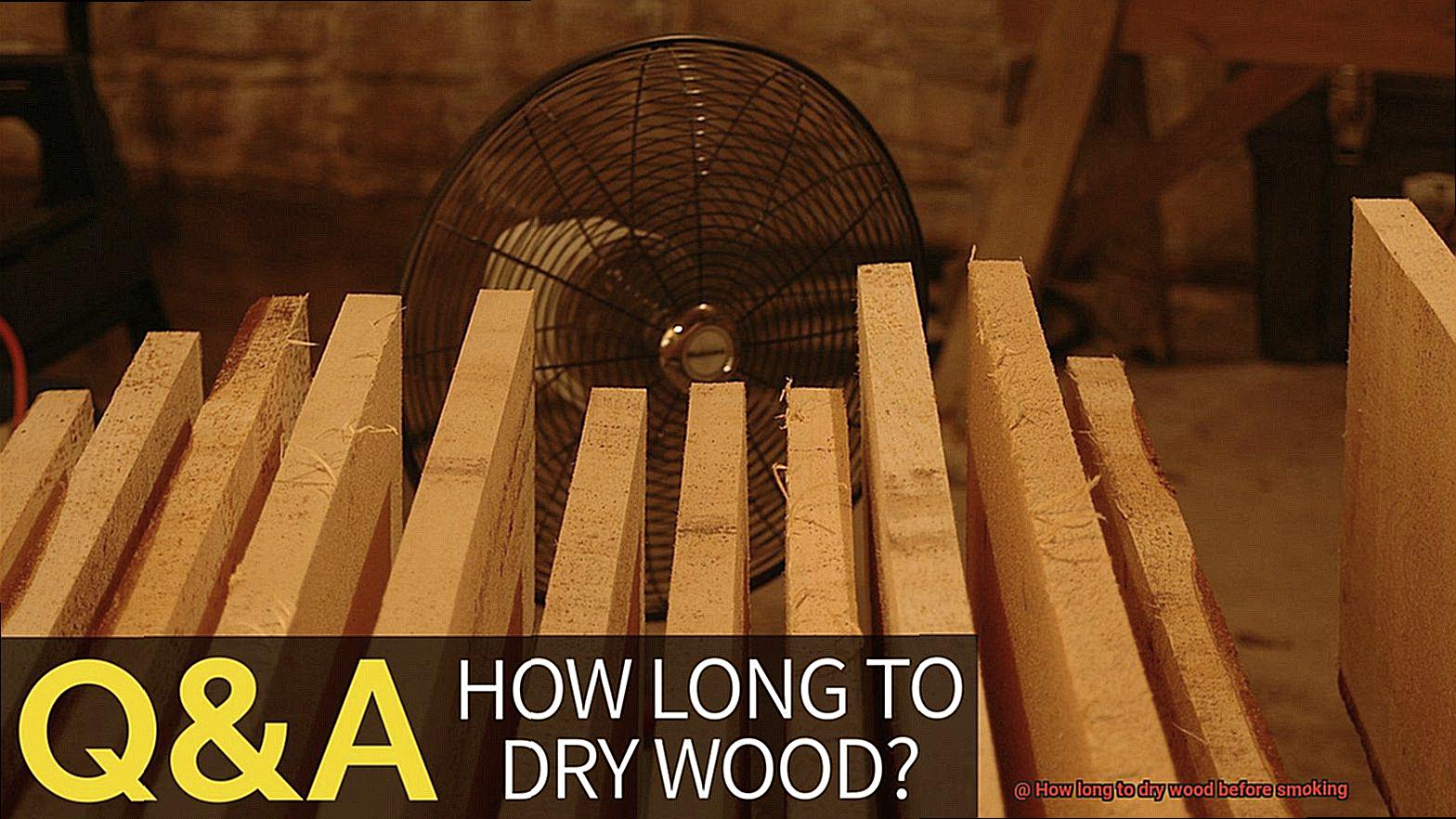
First, consider the type of wood you’re using. Hardwoods like oak and hickory take longer to dry than softwoods like pine and cedar. Thicker pieces of wood also require more time to dry than thinner pieces. And if you’re in a humid or damp climate, it may take even longer for the wood to dry properly.
While six months is a good starting point, it’s important to check your wood’s moisture content before using it. Aim for a moisture level of around 20% – anything higher could produce undesirable flavors and smoke, while anything lower than 10% can cause the wood to burn too quickly.
To check your wood’s moisture content, use a moisture meter or conduct a visual and tactile assessment. The wood should be dry to the touch and have a grayish color on the surface. If there are cracks or splits in the wood, that’s a sign that it’s dry enough for smoking.
If six months is too long to wait, there are ways to speed up the drying process. Cut the wood into smaller sizes and store it in a dry and well-ventilated area. You can also use a kiln or oven to dry the wood quickly.
Once your wood is dried, proper storage is key to prevent it from reabsorbing moisture. Keep it in a dry area off the ground and covered with a tarp or other protective cover.
How to Test if the Wood is Ready for Smoking?
Smoking food is a great way to add flavor and excitement to your outdoor cooking. However, using damp or wet wood can ruin the taste of your food and even be unsafe due to the production of harmful chemicals. Ensuring that your wood is properly dried before using it for smoking is crucial, and there are a few simple tests you can perform to determine if your wood is ready.
Moisture Test
The amount of moisture in your wood is a critical factor in determining whether it’s ready for smoking. The ideal moisture content for smoking wood is between 10% and 20%. To test the moisture content of your wood, you’ll need a moisture meter. This device can be purchased at most hardware stores. Simply insert the prongs of the meter into the wood and wait for a reading. If the reading is between 10% and 20%, then the wood is ready for smoking.
Weight Test
Another way to check if your wood is ready for smoking is to perform a weight test. Wet wood weighs more than dry wood, so by weighing your wood before and after it has been dried, you can determine if it’s ready for smoking. If there’s a significant reduction in weight, then the wood is likely ready to use.
Color and Texture Test
The color and texture of your wood are also important indicators of readiness for smoking. Dried smoking wood should have a dark brown color and a rough texture. If the wood appears light in color and has a smooth texture, it means that it still contains too much moisture and needs more time to dry.
Snap Test
A snap test can help you determine if your wood is dry enough for smoking. Take a small piece of wood and try to break it in half. If it snaps easily, then it’s dry enough for smoking. If it bends or feels pliable, then it needs more time to dry.
Type of Wood
Different types of wood have different drying times. Hardwoods such as oak and hickory will take longer to dry out than softwoods such as pine and cedar. Keep this in mind when selecting your smoking wood, and plan accordingly.
Storage
Proper storage is crucial to ensure that your wood dries out properly. Make sure to store your wood in a dry location while it’s drying out. This will help prevent mold and mildew from growing on the wood, which can affect its quality for smoking.
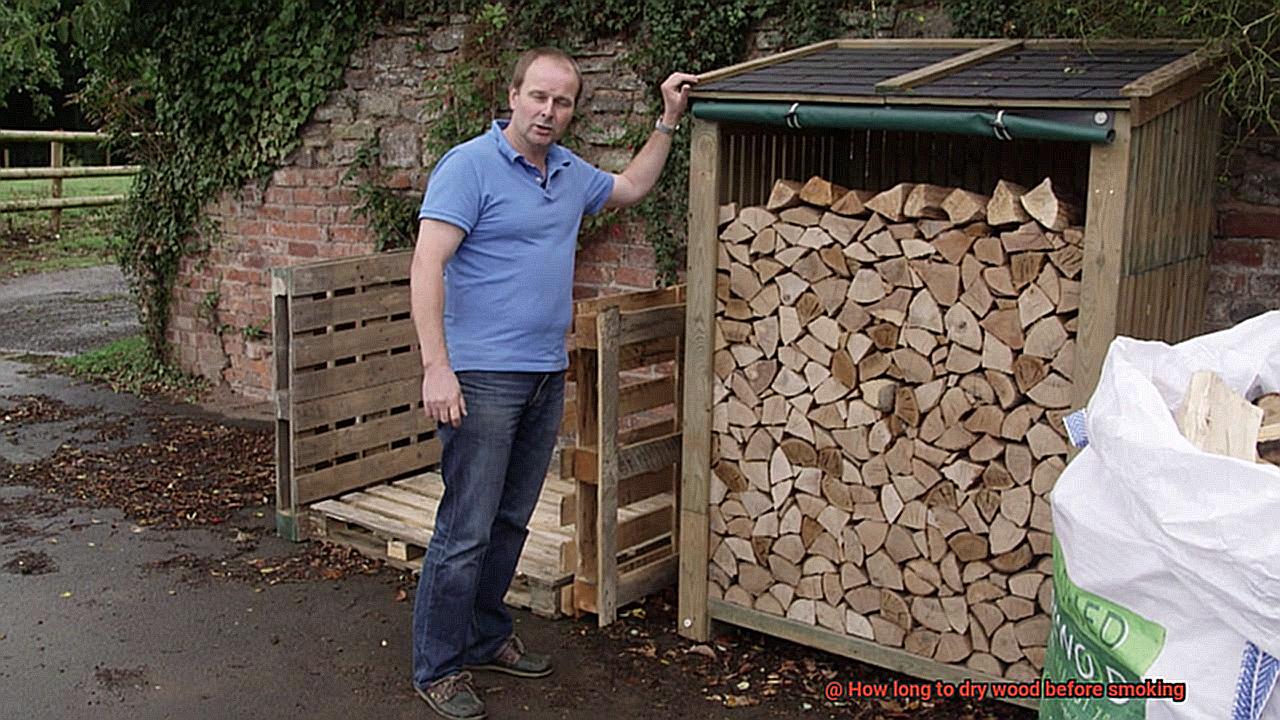
What is the Ideal Moisture Content for Smoking Wood?
Before you start, make sure you know about the ideal moisture content for smoking wood. It may seem like a small detail, but trust me, it can make all the difference in creating the perfect flavor profile for your meat.
To begin with, the ideal moisture content for smoking wood is around 20%. This is crucial because if the wood is too wet, it’ll create bitter smoke and ruin the taste of your meat. Conversely, if it’s too dry, it’ll burn too quickly and not produce enough smoke. For a perfect balance, aim for that sweet spot of 20%.
But how do you achieve this ideal moisture content? The key is drying your wood correctly. Stack the wood in a dry and well-ventilated area and let it air dry for at least six months. This method allows the moisture to evaporate slowly without affecting the flavor of the wood.
It’s worth noting that different types of wood have varying ideal moisture levels. For instance, hickory and oak should be around 20%, while fruitwoods like apple and cherry should be around 15%. Additionally, keep in mind that humidity levels in your area can influence the drying process.
If you’re unsure how to test the moisture content of your wood, don’t worry. You can buy a moisture meter from most hardware stores. This handy tool will give you an accurate reading so you can be sure your wood is at the perfect moisture level.
In summary, don’t let damp or dry wood spoil your next smoked meat masterpiece. Follow these guidelines and achieve the ideal moisture content for smoking wood. By doing so, you’ll ensure that every bite is packed with incredible flavor that’ll leave everyone begging for seconds. To recap:
Why Is It Important to Dry Wood Before Smoking?
If you’re a fan of smoking meats and vegetables, then you know that using dry wood is essential to achieve the best results. But have you ever wondered why it’s so important to dry wood before smoking? Let’s explore this topic in more detail.
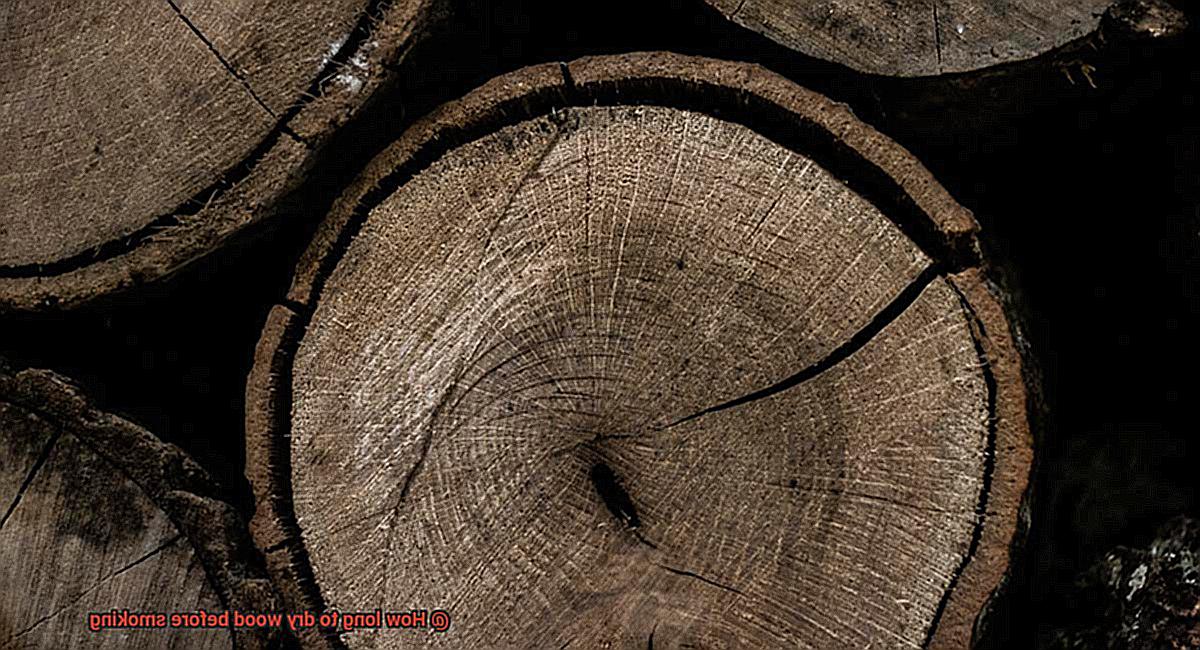
Firstly, using wet or damp wood can create an excessive amount of smoke and steam, which can negatively affect the flavor and texture of your food. No one wants to eat food that tastes like it was cooked in a sauna. Moreover, damp wood can cause temperature fluctuations inside the smoker, leading to uneven cooking times and inconsistent results. To avoid these issues, it’s crucial to use dry wood for smoking.
Secondly, using dry wood ensures that the smoke produced is clean and free of impurities. Moisture in the wood can cause it to rot and develop mold, which can taint the smoke and potentially harm those consuming the food. It’s essential to keep in mind that smoking is a slow cooking process that involves exposing your food to smoke for extended periods. Therefore, using dry wood that’s free from impurities is crucial for ensuring both taste and safety.
Lastly, dry wood burns more efficiently and produces a consistent level of heat and smoke. This allows for more precise control over the smoking process, resulting in a better end product. By using dry wood, you can achieve the perfect flavor profile that you’re after without having to worry about temperature fluctuations or excessive smoke.
It’s recommended to dry wood for at least six months before using it for smoking to ensure that it reaches a moisture content of approximately 20%. However, this drying time can vary depending on factors such as the type of wood, climate conditions, and storage methods.
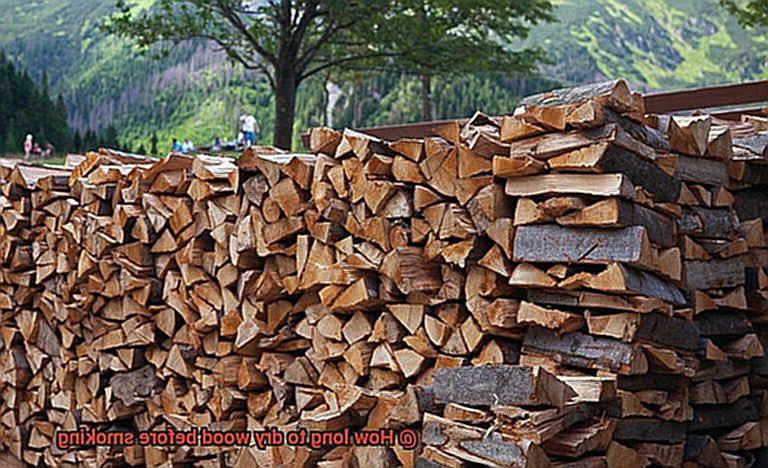
Factors Affecting the Drying Time of Wood
No one wants to ruin their prized meat or vegetable with damp or wet wood that produces too much smoke and steam. So, what are the factors that affect the drying time of wood? Let’s dive in.
Firstly, the type of wood you choose plays a significant role in its drying time. Hardwoods like oak and hickory have a higher density and more intricate cell structures that retain more moisture than softwoods like pine and spruce. As a result, hardwoods take longer to dry compared to softwoods. So, if you’re pressed for time, opt for softwoods instead.
Next up is the thickness of the wood. Thicker pieces require more time to dry than their thinner counterparts. This is because thicker pieces have a larger surface area that needs proper ventilation for drying. If you’re in a hurry, go for thinner pieces of wood.
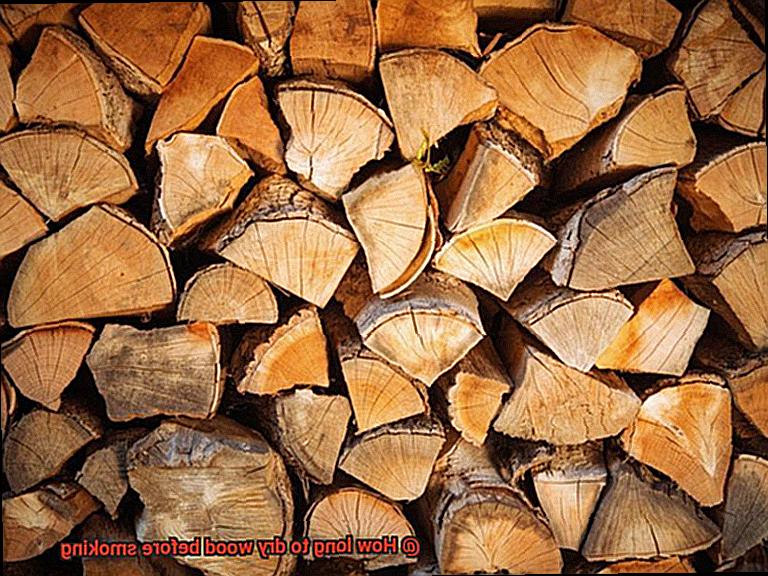
Last but not least, the humidity level of your storage area plays a crucial role in the drying process. High humidity levels slow down the process while low humidity levels speed it up. To ensure proper seasoning, store your wood in a dry, well-ventilated area with low humidity levels.
Different Methods To Speed Up The Drying Process
If you’re an avid smoker, then you know the importance of using dry wood to achieve the best flavor. However, waiting six months to a year for your wood to dry might not always be feasible. Fortunately, there are several methods you can use to speed up the drying process.
The first, and most effective, method is using a kiln. The enclosed space quickly removes moisture from your wood, but it can be expensive and requires specialized equipment and expertise. If you don’t have access to a kiln, a dehumidifier is another great option. It removes moisture from the air in a closed room with your wood, speeding up the drying process.
If you have a conventional oven at home, you can use it to dry your wood quickly. Place your wood in the oven at low heat and leave it for several hours until the moisture is removed. Keep in mind that this method is ideal for small pieces of wood.
A cost-effective way to dry your wood is by using a fan. It helps circulate air around your wood, which removes moisture quickly. Place your wood in a well-ventilated area and use a fan to blow air over it continuously. Although this method may take longer than others, it won’t break the bank.
Finally, if you’re lucky enough to have warm weather, try using sunlight to dry your wood. Place your wood in direct sunlight and rotate it every few hours to ensure all sides get exposed to the sun’s heat. Keep in mind that this method may take longer than other methods and is only effective during warm weather.
Tips For Storing and Handling Smoked Wood
Smoking wood is a crucial ingredient in achieving the perfect flavor for your smoked meat. However, proper storage and handling of smoked wood are just as important as selecting the right type of wood. Here are some tips for storing and handling smoked wood to ensure its quality and safety:
Keep it dry
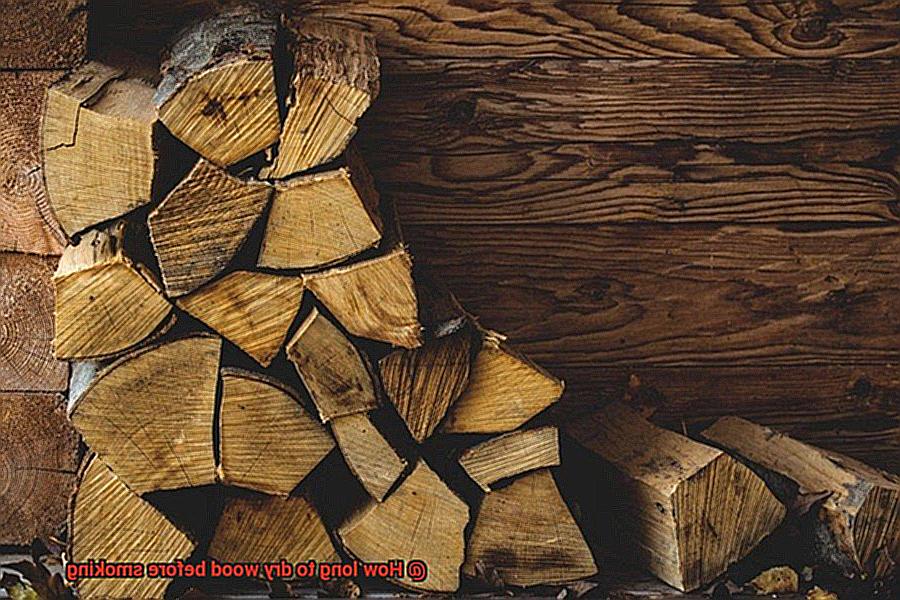
Moisture is the enemy of smoked wood. It can cause mold growth, spoil the flavor, and even attract insects. Therefore, it is essential to store smoked wood in a dry place like a shed or garage. Avoid storing it in damp areas or anywhere near water sources.
Protect from direct sunlight
Direct sunlight can also harm smoked wood by causing it to dry out too quickly or even catch fire. Keep the wood in a shaded area or cover it with a tarp to protect it from direct sunlight.
Use airtight containers
Airtight containers can help prevent moisture from getting into the smoked wood. Use plastic bags or containers with tight-fitting lids to store your wood. This will preserve its flavor and quality for longer.
Label your wood
To avoid confusion, label your smoked wood with the type of wood, date of smoking, and any other relevant information that you might need later on. This will help you keep track of your inventory and ensure that you’re using the right type of wood for each smoking session.
Handle with care
Smoked wood can be fragile and prone to breaking. Handle it with care to prevent any damage. It’s also a good idea to wear gloves when handling smoked wood to protect your hands.
Common Mistakes to Avoid When Drying Wood
There are common mistakes that people make when drying wood that can negatively affect the flavor and quality of your smoke. To help you avoid these mistakes, here are some tips:
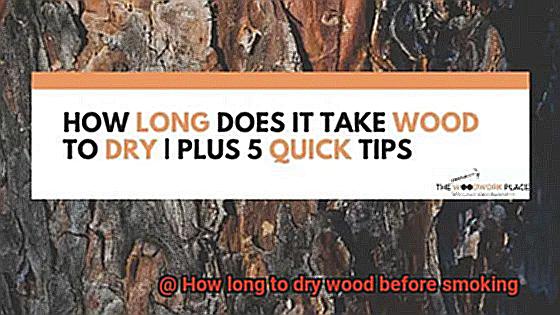
Firstly, don’t rush the drying process. Many people make the mistake of not giving their wood enough time to dry. Depending on the type of wood, it can take anywhere from several weeks to several months for it to dry properly. Rushing the process can lead to uneven drying and ultimately result in an inferior smoke.
Another mistake is drying your wood in a humid environment. Humidity can slow down the drying process and increase the risk of mold and other types of fungi growing on the wood. Make sure to dry your wood in a dry, well-ventilated area with good airflow to avoid these issues.
Using high heat to dry your wood is another common mistake. While it may seem like a quick solution, high heat can cause the wood to crack and split, which will negatively impact the quality of your smoke. It’s best to air-dry your wood slowly to ensure even drying and a high-quality smoke.
Lastly, after you’ve dried your wood properly, it’s crucial to store it correctly. Keep it in a dry, well-ventilated area away from direct sunlight and moisture. Proper storage will help maintain its quality and ensure it’s ready for your next smoking session.
xEnwSWJwCpY” >
Conclusion
As we come to the end of this article, we hope you have learned just how important it is to dry your wood before smoking. Achieving that perfect smoky flavor for your BBQ can be a game-changer, but it all starts with proper preparation.
When deciding how long to dry your wood, take into account factors like type, thickness, and humidity levels. While six months is a general rule of thumb, checking the moisture content is essential. Aim for around 20% moisture for optimal results.
If you’re short on time, there are several methods you can use to speed up the drying process. Kilns, dehumidifiers, ovens, fans or sunlight can all do the trick. However, avoid common mistakes like drying wood in humid environments or using high heat.
Proper storage and handling of smoked wood are also crucial in preserving its quality and flavor. Keep it in a dry place away from direct sunlight and moisture and label it with relevant information.
By following these guidelines and avoiding common mistakes, you’ll be well on your way to impressing your guests with mouth-watering smoky flavors they won’t forget.

